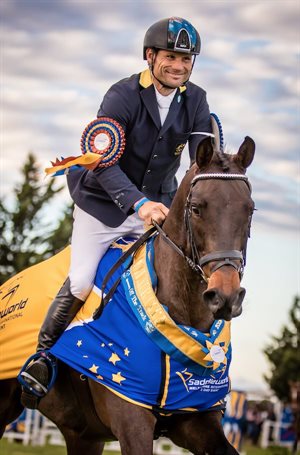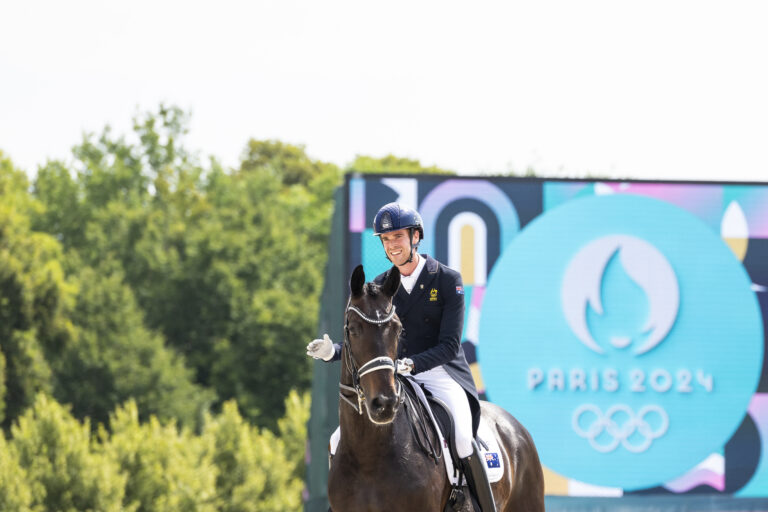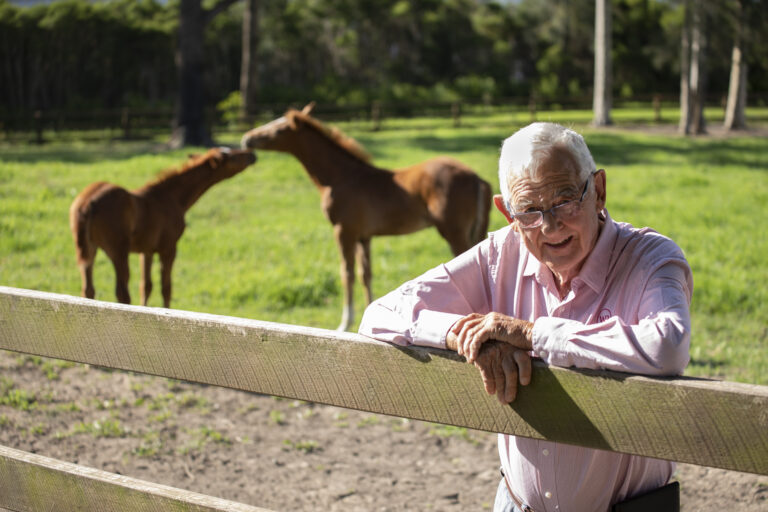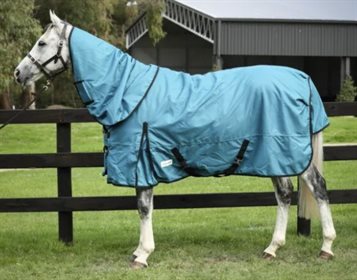This article first appeared in a previous edition of Equestrian Life magazine. To see what is in our latest digital issue, please click here.
© Geoff McLean/Gone Riding Media
Listen to that heart beat
By Mike Tweedie
Humans have been using heart-rate monitoring during exercise to measure their response to training for years. We can learn a lot more about our horses if we apply the same technology to them.
The horse industry has been slow to adapt to heart-rate monitoring technology and integrate it into its training programs. There is also very little published work on the use of heart-rate monitoring during exercise in horses. The use of heart-rate monitors during exercise has been of considerable interest to me in my clinical practice. Monitoring of heart rates during exercise has helped me, in conjunction with riders and trainers, to design specific training programs that ensure fitness and maximise the athletic potential of individual horses. Of considerable value to me as a clinician has been the realisation that monitoring heart rates during exercise can be a useful tool to identify respiratory illness and some types of lameness before they become clinically evident.
The athletic demands placed upon horses competing in different equestrian disciplines vary greatly. For example, a galloping racehorse can reach speeds of 69km/h over 1000 metres, while eventers average 32km/h for approximately eight minutes as they jump cross-country obstacles. The average speeds obtained in the Melbourne Cup are in the region of 58km/h over the 3200 metres of the race.
The duration with which horses are expected to perform at their maximum capacity also varies between disciplines. Show jumpers are required to perform with short bursts of high intensity for 60-90 seconds, whilst eventers and dressage horses have to perform for up to 10-12 minutes at the highest levels.
The resting heart rate of an adult horse should be less than 40 beats per minute and the heart rate of a horse during exercise can peak between 220-240 beats per minute. The heart-rate response to exercise is a regular response. There is a direct link between speed and heart rate. As speed increases, the heart rate increases. As speed decreases, the heart rate decreases.
Heart-rate monitoring during exercise can help us assess the athletic ability of individual horses and identify whether they are capable of performing the task at hand. For example, a racehorse that demonstrates good aerobic capacity, but a limited ability to sprint, would be more competitive starting in 2000-metre staying races rather than 1000-metre sprint races. Heart rate monitoring during exercise facilitates detailed assessment of horses and allows training to be tailored to individuals. For example, our horse with limited sprinting ability would be given more time to mature and might race as a three-year-old rather than a two-year-old.
It is important for competitors to incorporate into their training program work that exposes their horses to the same levels of exercise intensity to which they would be subjected to in a competition environment. The frequency with which riders train at this level determines whether a rider over-trains or under-trains their horse. Over-training increases the risk of injury during daily work whilst under-training increases the risk of injury during competition.
Riders commonly make subjective assessments to measure their horse’s fitness. How does he look? How does he feel? Heart-rate monitoring during exercise allows us to make an objective assessment of a horse’s response to a particular piece of work. This is not to say that those subjective assessments are without value, only to say that heart-rate monitoring during exercise gives us another piece to fit into the puzzle of a horse’s training program.
Fine-tuning the warm-up can be valuable because the warm-up performs two functions. Firstly, the horse has a cardio-vascular response to exercise. Horses store red blood cells in their spleen and the spleen contracts when the horse begins to exercise. Splenic contraction and the release of stored red blood cells significantly increase the oxygen carrying capacity of the horse. Secondly, the warm-up allows your horse to relax into the work, begin to concentrate and achieve a mindset conducive to high-level training. A warm-up that is too difficult will be counterproductive to training and this is where heart-rate monitoring can have some value.
In my experience, monitoring the heart rate of horses during exercise is a valuable means to identify respiratory illness and some types of lameness. The heart rate during exercise is a reliable and repeatable trait in exercising horses. As a horse’s fitness improves, there will be a lowering of the maximum heart rate during exercise. The speed with which the heart rate returns to normal after exercise will also increase. We call this the recovery period. The recovery period and maximum heart rate are reliable measures in the working horse. Any increase in the recovery period or maximum heart rate has been, in my experience, a reliable method of identifying sickness or injury. Changes in the heart-rate response to exercise will often be evident before an issue becomes detectable on clinical examination.
When we undertake a clinical examination, as clinicians we know what is considered to be within the normal range for the average horse. For example, a heart rate of between 36 and 40 beats per minute and rectal temperature of between 37.5 and 38.5C are considered to be normal findings. However, when we consider the heart-rate response to exercise, what is ‘’normal’’ for an individual horse will be greatly influenced by that individual’s level of fitness. So, heart-rate monitoring during exercise only becomes a sensitive tool to detect clinical problems when the normal heart-rate response of an individual horse is established in response to a particular piece of work. This means that the value of heart-rate monitoring during exercise is derived from taking the measurements on a regular basis. For example, as a clinician, I will sometimes use heart rate measurement during exercise to help me make a decision whether or not to return a horse to work. Not so long ago, I was caring for a racehorse that was recovering from a respiratory infection.
Clinically, the horse appeared normal. There were no abnormalities recorded on blood work and the horse also appeared normal during endoscopic examination of the upper respiratory tract. The trainer still thought the horse was “not right”. Fortunately, the trainer had previously monitored this horse’s heart rate during a gentle piece of work on the track. We repeated this work and noted that the recovery period for this horse was prolonged. On the basis of this information, a decision was made to rest the horse for another week.
The work was repeated after this time and it was noted that the recovery period for the horse had returned to what it was pre-infection. It was upon this basis that the horse was returned to full work.
Heart rate monitoring during exercise is an invaluable, yet underutilised tool by the modern rider or trainer. Systems that monitor heart rates during exercise can be surprisingly affordable. For example, there are iPhone applications that combine with heart-rate electrodes. There are watch-based GPS systems and there are also equine specific systems. Each one has its strengths and weaknesses but the right system can be a valuable tool in an equine training program. If you are interested in integrating heart-rate monitoring during exercise into your training program, please contact our clinic and we will be happy to help you choose the application or tool that best fits your situation.
READ THE LATEST NEWS ARTICLES HERE







